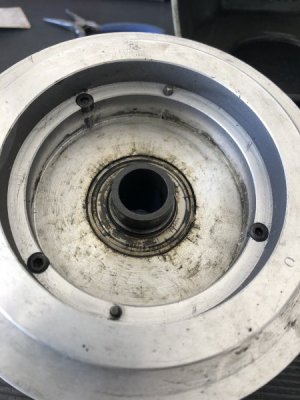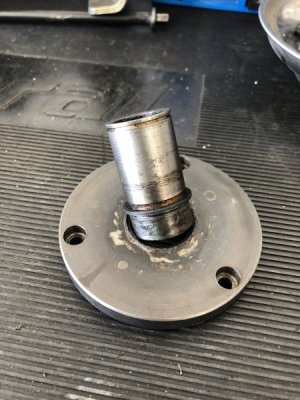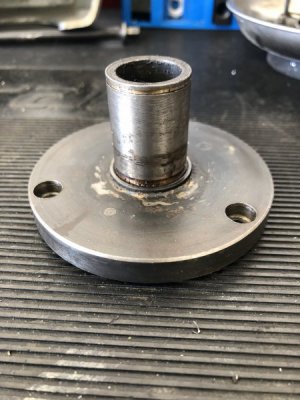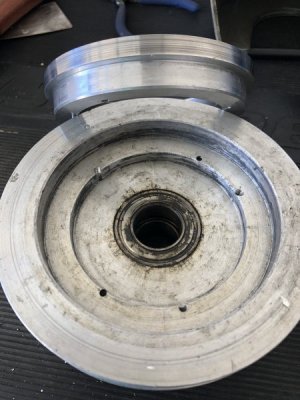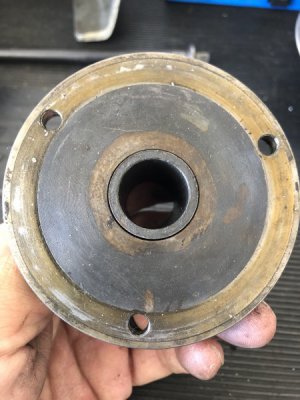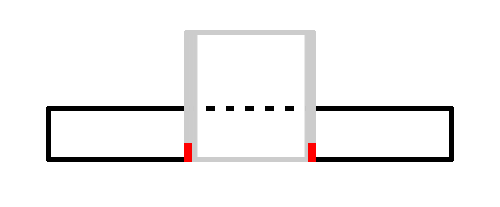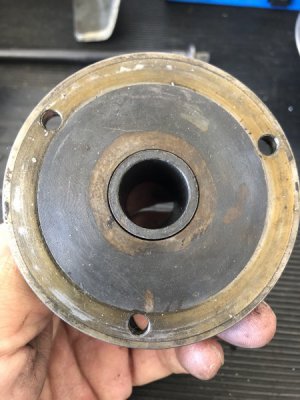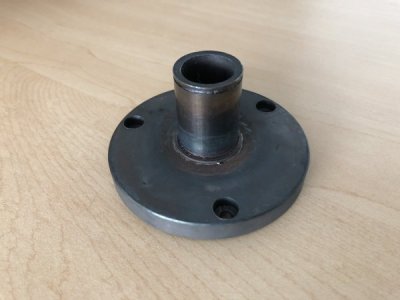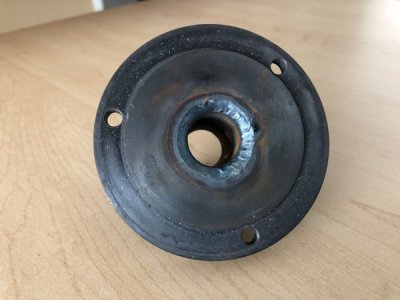- Joined
- Sep 28, 2017
- Messages
- 44
Now that you have the top clip off, press the sleeve out through the pulley from the top. It should push the bottom bearing out with it. Impossible to say how much trouble the bearings will give you. Sometimes the bearings just fall out/off (a good or bad thing depending on your point of view). The top bearing in the rear cone pulley on mine was wallowed out several thousandths, and had to be sleeved and re-bored. I also sleeved and re-bored the brake ring contact surface in the front cone pulley. The end result was a very quiet machine and a brake that locks things up with just a little pressure on the lever.
I recommend replacing all of the bearings while you have it apart. They're standard sizes, and inexpensive. The only ones that I re-used were the thrust bearing on the knee screw and the quill bearings (but I have spares anyway).
-Jon
Thanks Jon. Any idea on the broken piece of the sleeve still stuck in the plate? Is that part of the plate or can the remaining broken piece be pressed out? Also, why does the piece have to be brazed on? Seems like it can be welded back together just as easily with more strength. Is it a balance issue?


